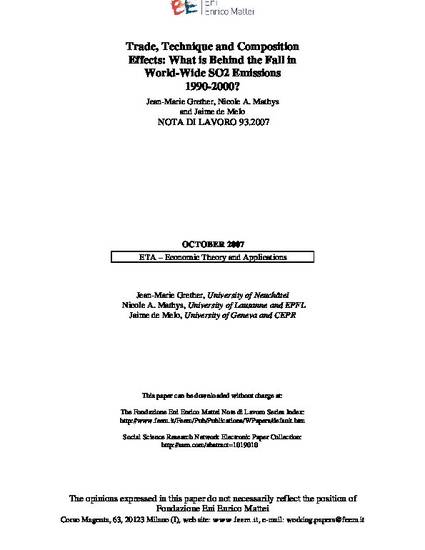
Combining unique data bases on emissions with sectoral output and employment data, we study the sources of the fall in world-wide SO2 emissions and estimate the impact of trade on emissions. Contrarily to concerns raised by environmentalists, an emission-decomposition exercise shows that scale effects are dominated by technique effects working towards a reduction in emissions. A second exercise comparing the actual trade situation with an autarky benchmark estimates that trade, by allowing clean countries to become net importers of emissions, leads to a 10% increase in world emissions with respect to autarky in 1990, a figure that shrinks to 3.5% in 2000. Additionally, back-of-the-envelope calculations suggest that emissions related to transport are of the same magnitude. In a third exercise, we use linear programming to simulate extreme situations where world emissions are either maximal or minimal. It turns out that effective emissions correspond to a 90% reduction with respect to the worst case, but that another 80% reduction could be reached if emissions were minimal.
Available at: http://works.bepress.com/nicole_mathys/23/
